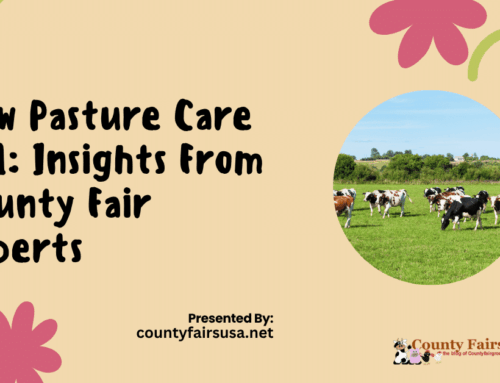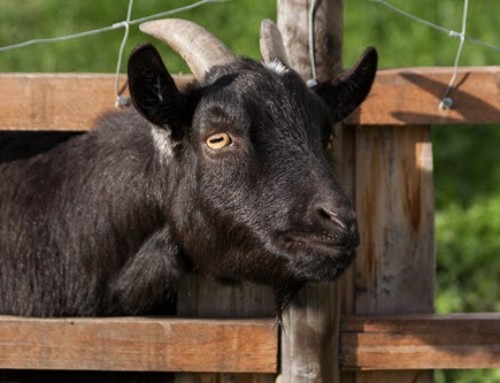At the heart of every county fair lies a deep respect for agriculture, heritage, and animal husbandry. While the crowds may gather for rides and funnel cakes, real dedication is found in the livestock barns especially during the judging of cow families.
Unlike individual cattle shows, cow family classes highlight the strength of genetics across generations. A dam and her daughters aren’t just judged for their appearance, but for the consistency, structure, and traits they share. It’s a display of careful breeding, long-term planning, and day-to-day animal care that few outside the farming world fully appreciate.
How Cow Families Are Judged
So, how do judges evaluate cow families? What makes one group stand out from another? This guide breaks down the full judging process offering a clear, well-informed look at what goes into selecting the best bovine bloodlines at your local county fair.
What Is a Cow Family in Livestock Competitions?
A cow family is a group of related female cattle typically a dam (mother cow) and her daughters or granddaughters. Unlike individual competitions, these animals are evaluated together to see how well positive traits are carried across generations.
This class is particularly popular among breeders, as it highlights long-term breeding decisions and the success of a consistent genetic line. A strong cow family shows that desirable features are not random, but the result of careful planning and management.
Main Criteria Used to Judge Cow Families
Judging is based on specific physical, genetic, and behavioral characteristics. It’s not about picking the largest animal or the flashiest one it’s about evaluating the group as a cohesive unit.
1. Structural Soundness
Judges begin by evaluating how each animal is built. Structure plays a critical role in overall health and performance.
Key points include:
- Straight top lines (the back should be level)
- Correct leg angles and strong pasterns
- Balanced proportions between front and rear ends
- Smooth walking motion and posture
2. Udder Conformation (for Dairy Breeds)
For dairy breeds like Holstein or Jersey cows, udder health is vital. A productive cow must have a strong, well-shaped udder.
Traits judges look for:
- Tight, high udder attachment to the body wall
- Evenly spaced, symmetrical teats
- Balanced udder quarters
- Clean, healthy skin texture
3. Uniformity Across the Group
This is perhaps the most important aspect of the cow family class. The cows should resemble one another, showing that they come from a strong maternal line.
Uniform traits may include:
- Similar size and frame
- Matching coat colors or patterns
- Shared facial structure or ear shape
- Consistent temperament and behavior
4. Body Condition and Muscling
Especially in beef breeds, muscle development and proper body condition score are closely observed.
Judges assess:
- Muscle tone over the back, shoulders, and hindquarters
- Fat cover neither too thin nor overly conditioned
- Rib spring and depth of body for feed efficiency
5. Breed Standards
Each breed has ideal characteristics. Judges are trained to look for how well each animal aligns with these breed-specific standards.
Examples:
- Angus cattle should be naturally polled (hornless) with solid black or red coats.
- Jersey cows tend to be smaller-framed and fawn-colored with angular body shapes ideal for milk production.
- Hereford cattle are recognized by their white faces and red bodies with moderate muscling.
Presentation Matters: Showmanship and Grooming
Even the best genetics can be overshadowed by poor presentation. While the focus in cow family classes is on lineage and structure, presentation still plays a supporting role.
Exhibitors are expected to:
- Wash, brush, and trim their animals regularly
- Ensure hooves are properly clipped
- Lead animals with calm, steady control
- Wear clean, appropriate show attire
Handlers who maintain a calm and confident presence make a big difference, especially when working with multiple animals in the ring.
How Dairy and Beef Cow Families Differ in Judging
Though the judging framework is similar, dairy and beef cow families are judged with slightly different priorities.
Dairy Cow Families:
- Focus is placed on udder quality, frame, and milk production potential
- Body structure should reflect capacity for high feed intake
- Legs and feet must support long lactation cycles
Beef Cow Families:
- Emphasis is on muscling, bone strength, and overall mass
- Progeny should show meat-producing qualities
- Maternal ability and calf-raising traits are often noted
Understanding the specific goals of each breed type helps clarify why certain features matter more than others.
Common Mistakes Exhibitors Should Avoid
Even well-bred cows can lose points if certain issues are overlooked. Exhibitors often make errors that could easily be avoided with better preparation.
Mistakes to watch out for:
- Inconsistency: Entering a cow and two daughters that clearly don’t share strong resemblance
- Poor grooming: Dirty coats, matted hair, or untrimmed hooves signal a lack of attention
- Unbalanced feeding: Overfed or under-conditioned cows can throw off visual uniformity
- Nervous animals: Lack of ring training makes cows harder to handle and distracts from judging
Preparation, calm handling, and attention to detail can prevent many of these issues.
How Judges Are Trained to Evaluate Cow Families
Judges at county fairs don’t just wing it. Most have agricultural backgrounds and formal training through livestock judging programs, breed associations, or 4-H and collegiate competitions.
Judging practices typically include:
- Using scoring sheets or point-based systems
- Comparing against breed-specific scorecards
- Providing oral reasoning or explanations for rankings
- Staying consistent and impartial across all entries
These standards ensure that judging is fair, informed, and consistent regardless of region or breed.
Tips for Breeders Entering Cow Family Classes
Whether it’s your first time or your tenth, preparing a cow family for fair season requires planning and commitment. Here are some tips to help you compete with confidence:
- Start with genetics: Choose a proven dam and maintain accurate lineage records.
- Track progress: Document body measurements, milk yields, or calving history.
- Train early: Cows should be used to walking on a halter and being handled.
- Feed consistently: Diet impacts muscle tone, coat shine, and energy levels.
- Work as a team: If showing multiple animals, coordinate handlers to keep the group steady.
Why Cow Family Classes Matter at County Fairs
While these shows may seem niche to outsiders, they serve a much larger purpose in the agricultural world.
Key benefits:
- Support better breeding decisions by identifying top bloodlines
- Encourage youth involvement through 4-H and FFA livestock programs
- Promote community learning, giving the public insight into responsible animal care
- Reward long-term commitment to farming and animal husbandry
The cow family class is a celebration of both tradition and progress honoring the connection between past and future in the livestock world.
Conclusion
Judging cow families at county fairs is about more than appearance. It’s a deep dive into the success of breeding programs, the skill of handlers, and the consistency of traits passed through generations. Whether you’re participating as a breeder or simply watching from the stands, the cow family competition offers one of the richest educational experiences at the fair.
By understanding what judges look for from structural soundness to breed characteristics you gain a clearer view of the dedication behind each ribbon won. These animals aren’t just showpieces they’re a living legacy of thoughtful care, genetic planning, and agricultural excellence.









Leave A Comment